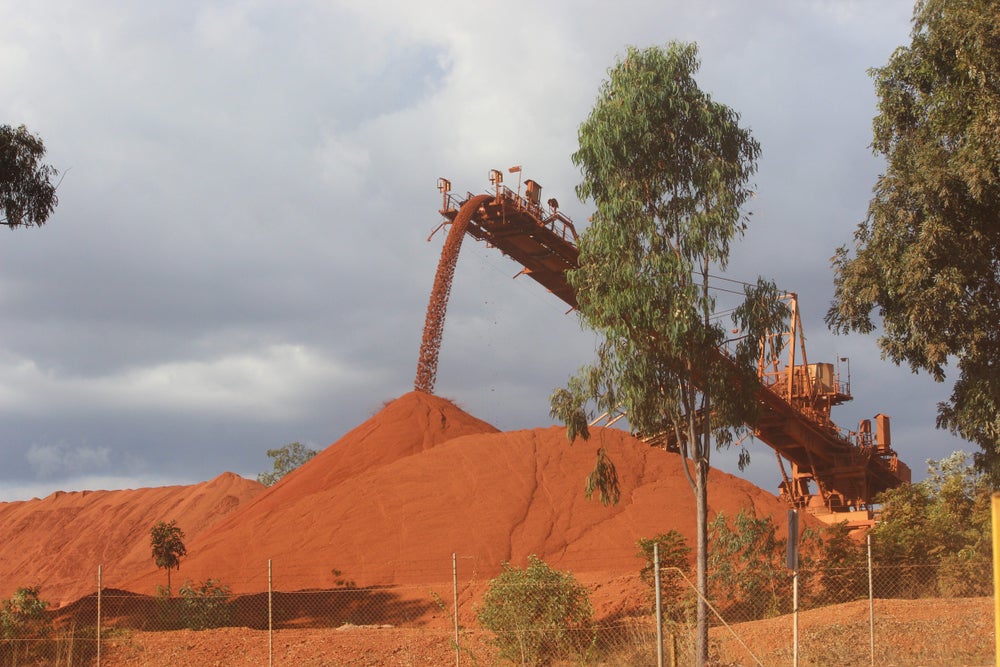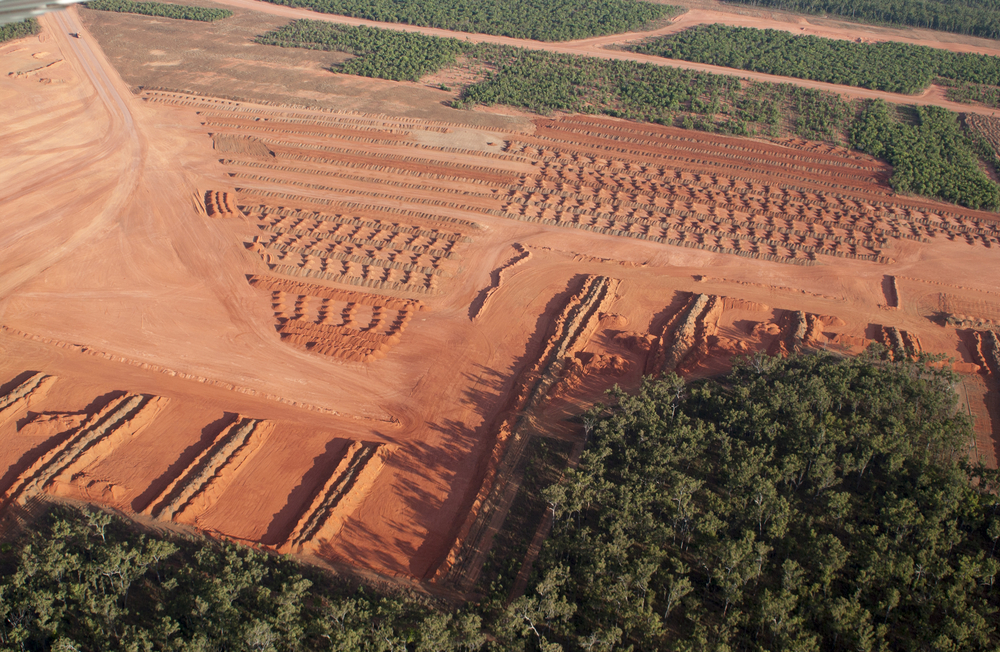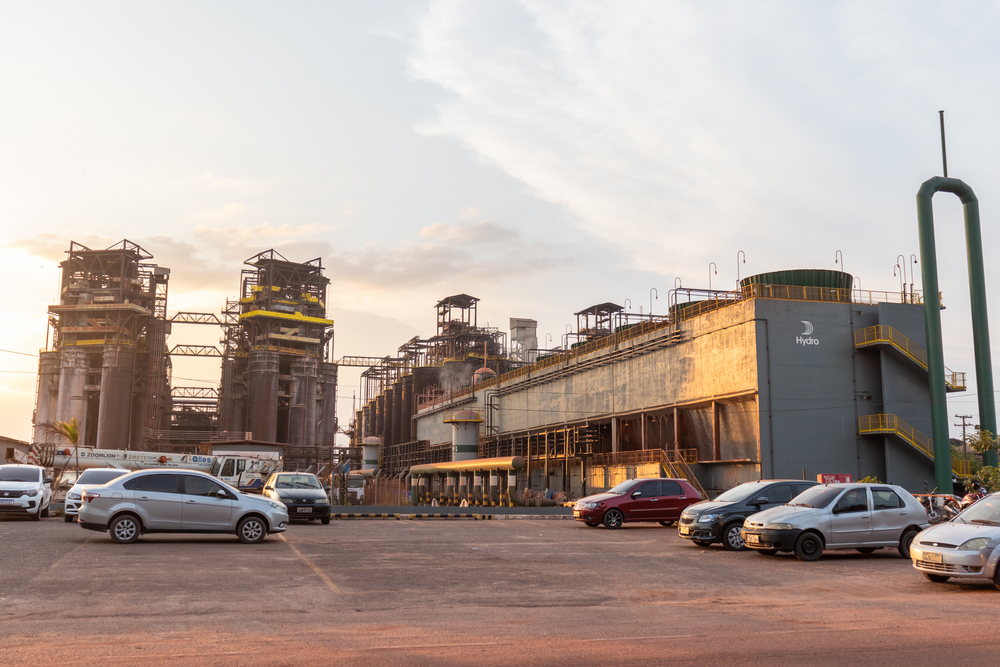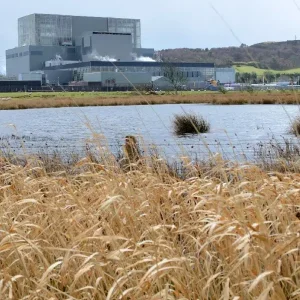
Australia and Guinea are two of the top five largest bauxite producing countries in the world.
The sedimentary rock, which was first discovered by French geologist Pierre Berthe in the early 1800s, is the world’s primary source of aluminium and gallium.
Usually found near the earth’s surface, the main composition of raw bauxite is mostly alumina, silica, titanium dioxide and iron oxides.
About 85% of the bauxite produced in the world is converted into aluminium because of its various industrial uses. The aluminium derived from bauxite is used in everything from foil for packaging, to vital components in automobiles, solar panels and aerospace technology.
The forecast for world bauxite production in 2020 is estimated at 367 million metric tonnes.
Here, NS Energy profiles the top five bauxite producing countries in the world.
Top five bauxite producing countries in the world
1. Australia – 105 million metric tonnes

Australia produced 105 million metric tonnes in 2019 to top the list of the world’s bauxite producing countries – marking a significant increase on the 97 million tonnes (Mt) dug up in the previous year.
Having produced about 27 Mt in 2019, Alcoa World Alumina’s Huntly mine near Dwellingup in Western Australia plays a major role in the nation’s bauxite mining industry.
The country’s robust growth in 2019 is also down to full capacity production at Metro Mining’s Bauxite Hills mine on Western Cape York, combined with mining giant Rio Tinto beginning its Amrun project near Boyd Point early that same year.
The projected growth of Australia’s bauxite production until 2023-2024 is estimated at 122 Mt.
2. China – 68 million metric tonnes
Second on the list of bauxite producers is China, which had an annual production of about 68 million metric tonnes in 2019.
That total was more than half of the 124 Mt produced in Asia as a whole. China’s notable production of the ore is partly due to Chalco, one of the world’s biggest producers of primary aluminium.
Although several bauxite mines have been closed down in the Shanxi and Henan provinces, Guizhou is now viewed as a potential hub for the sedimentary rock after it was revealed the region has an estimated 162 Mt of deposits.
China also imports millions of tonnes of bauxite from Guinea, Australia and Indonesia. In the first half of 2019, those nations accounted for almost 94% of China’s total bauxite imports, amounting to about 57 Mt.
3. Guinea – 64 million metric tonnes
Over the years, Guinea has featured as one of the largest bauxite producers in the world.
The West African country produced and exported 64 million metric tonnes of the ore in 2019, which was quite a significant rise from its 2018 export volume of 56 Mt. It has the largest bauxite reserve count in the world at 40 billion tonnes.
The Sangaredi mine in the Boke region is its biggest bauxite producer. It is owned by Compagnie des Bauxites de Guinée (CBG), as part of a joint venture between the Guinean Government and Halco Mining.
About half of the nation’s bauxite exports are bought by China, Spain, Ireland and Ukraine, while it also exports almost 50% of all global seaborne bauxite.
4. Brazil – 30 million metric tonnes

Brazil, which produced 30 million metric tonnes of bauxite in 2019, comes in fourth on the list of top-producing countries. Its output of the ore was 27 Mt in 2018.
It is yet to reach the heights of 2017, though, when the country’s bauxite production reached 36 Mt, following high output from two of its leading bauxite miners, Mineração Rio do Norte (MRN) and the Norsk Hydro-owned Mineração Paragominas.
Pará State of Brazil possesses abundant resources of bauxite, which is where MRN plies its trade, as it is located just west of Pará in Oriximiná. MRN is one of the two sources that supply the Hydro Alunorte refinery.
Bauxite is shipped over 1,000km along the Trombetas and Amazon Rivers to the Vila do Conde Port in Barcarena, and from there it goes to Hydro Alunorte – the world’s largest alumina refinery.
The second mine that supplies Hydro Alunorte is Hydro Paragominas, which is located close to the city of Paragominas, in Pará. From there, the bauxite is pumped through a 244km long pipeline that helps reduce the industrial impact on the environment.
5. India – 26 million metric tonnes
India ranks fifth on the list of top bauxite producers, with a reported production of 26 million metric tonnes in 2019.
According to a report by BMI Research, it expects the nation’s output of the ore to reach forecast 49 Mt in 2021.
This is due to a five-fold increase in mining lease area in the south-eastern state of Odisha, which is India’s largest bauxite producing state, as it produces more than half of the country’s bauxite resources.






